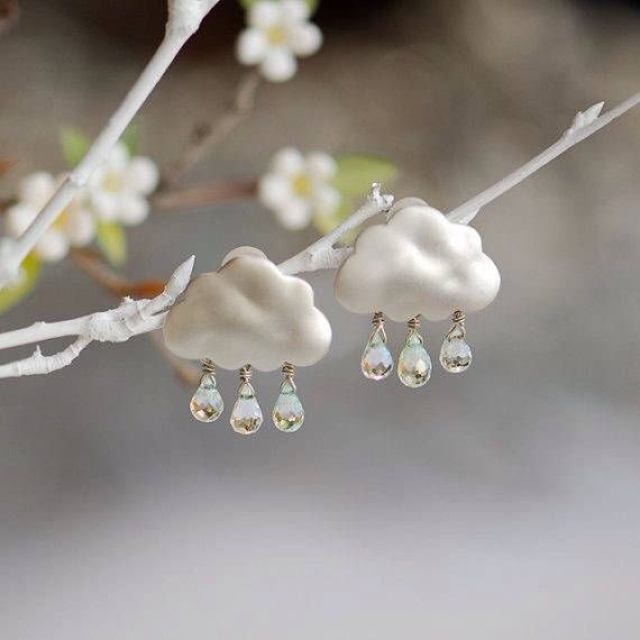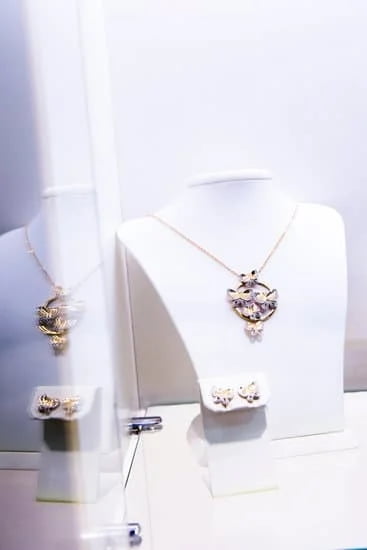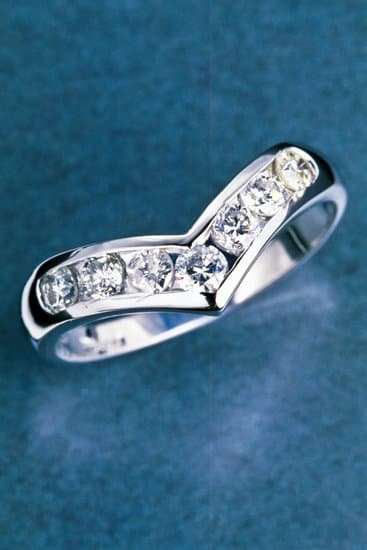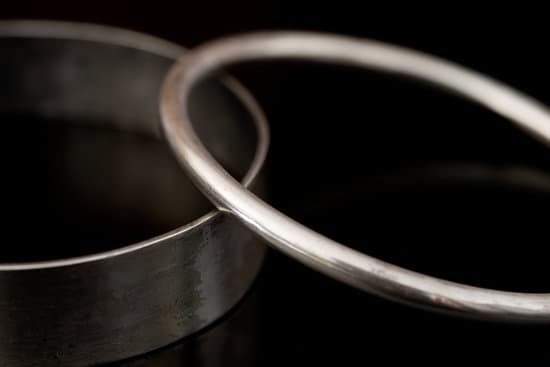The words “platinum jewelry stamps” are commonly heard in the jewelry industry but what do they really mean? Platinum jewelry is an incredibly precious metal and is most commonly stamped with a special symbol which denotes its quality. Platinum jewelry stamps not only provide information regarding the type of metal used to create the piece, they can also show who made it and where it was manufactured.
Platinum is a rare and beautiful metal that has been used to make jewelry for centuries, thanks to its shining white appearance and long-lasting properties. The symbol for platinum jewelry pieces is a simple “Pt” – often accompanied by three numbers indicating purity levels from 850 to 950 parts per thousand. Most professional jewelers will use stamps ranging from 900 Pt/1000 or higher when making platinum items. This helps ensure that customers are receiving the highest quality product.
In addition to the “Pt” stamp on items, platinum jewelry pieces may also include other unique markings depending on who manufacturer them. Many companies have created their own trademark symbols which can be stamped onto pieces they craft as a way of advertising their work and protecting against counterfeits. These can vary greatly based on the specific company or country of origin and will usually appear alongside traditional marks like 925 or 750 which denote silver or gold content respectively.
Whether you’re looking for a classic wedding band or something more unique, understanding and recognizing platinum jewelry stamps can help you determine if an item is genuine before you make your purchase. It’s important to remain aware of potential adulteration in order to avoid being scammed by unscrupulous dealers – so always check for visible stamps whenever buying anything containing precious metals or stones.
Different Platinum Alloys Used in Jewelry Stamps
The precious metal Platinum is a unique material used in jewelery and watches, often because of its light weight, durability, and high value. As with any material used in jewelry making, it is important to also understand the different alloys available for use when stamping platinums pieces. Here are the most frequently used platinum alloys:
- 950 Platinum – composed of 95% pure platinum and 5% of other metals like ruthenium or cobalt.
- 900 Platinum – consists of 90% platinum
- 850 Platinum – comprises 85%of pure platinum and 15% other metals ((possibly a combination of copper, palladium, iron, cobalt).
Each alloy has its own advantages and disadvantages with regard to both its look and practicality for jewelry making. 950 Platinum is considered the “best” alloy because it holds as many higher concentrations of pure platinum than any other alloy available. When the stamp “950 Plat” appears on a piece it indicates that highest quality platinum was used allowing superior strength as well as scratch resistance.
900 Platinum or 90PLAT is usually more affordable when compared to 950 but still contains ounces of sterling strength durability. 850 Plat on the other hand has least amount of pure platinum – yet effective lower costs due to smaller amounts of other alloys introduced into mix. Additionally, some jewelers choose this alloy because they believe that lower gold purity ratio will create a softer more malleable metal piece easier to adjust while tailor-fitting dimensions for customers.
The melting point temperature for each alloy varies as measured by their respective percentages. 950 Plats lowest melting point temperatures are slightly above 3200°F (approximately 1760°C).
However 900 plats has been noted to show signs of melting below the absolute temperature 3200°F depending upon how it was produced during mintage process. 850 Plat melting points are even lower – around 2800°F which lowers their overall production cost but also limits amount type shapes/styles able craft from single sheet without compromising structural integrity along way.
The Significance of Different Placement of Platinum Jewelry Stamps
When buying any kind of jewelry, one of the first things to consider is its hallmark. Hallmarking has been around since ancient times, and it is a way to verify that the item for sale is actually made from the precious material it claims to be made from. When it comes to platinum jewelry, there can be several stamps or marks on the piece that reflect its grade or quality.
Each stamp indicates a different grading system, and understanding how to read these symbols is an essential step when purchasing platinum jewelry.
Major Platinum Jewelry Stamps
Here are some of the common stamps found on platinum jewelry:
- Pt900 – This stamp indicates that the jewelry is at least 90% pure platinum.
- Pt950 – This stamp denotes that the piece contains a minimum of 95% pure platinum.
- Pt-irid – This symbol signifies that both 75% iridium (a close relative of platinum) and 25% ruthenium (also related to silver) have been used in making the item.
- Pt850 – This mark indicates that a mix of 75% gold and 25% other metals including copper and palladium has been added to make up 85% total purity.
Platinum jewelry may also include details about its origin such as ‘Made in USA’, ‘Gem Setters International’ and so forth. It’s important for buyers to ask for complete details about each piece before making their purchase. Taking into account both hallmarks and origins can help ensure buyers get authentic pieces every time they shop for platinum jewelry.
Advice on Legally Obtaining Platinum Jewelry Stamps
For those looking to purchase platinum jewelry, the presence of a stamp or mark can give them peace of mind regarding its quality and composition. It is important for shoppers to note that legally purchased stamps must be obtained from an approved hallmarks office.
Though there may be some cheaper alternatives available on the market, purchasers should take caution as these are likely to be fake and provide nothing more than false assurance in regards to the authenticity of the original materials used.
Due Diligence
Anybody who wishes to acquire legitimate stamps should perform due diligence in order to make sure that they are dealing with reputable organisations. Doing research online can reveal customer satisfaction ratings and reviews which can give an indication about reliability and quality control. At the same time, they should also ensure that the proper documents are filed when obtaining a genuine platinum jewelry stamp.
Coin suppliers
In addition, coin stores and numismatic dealers may also be a good source for obtaining authentic marking stamps. They may have access to rare coins constructed of platinum which could offer shoppers useful information about symbols associated with genuine stamped items; such as national flags or regional emblems associated with manufacturers who craft pieces from this precious metal.
The Hallmarking Office
Finally, if customers intend on acquiring stamps legitimately then they will need to go through their respective hallmarking office in order to obtain certification documents and specials seals which identify their license issued by said organisation. If all criteria is met then any product purchased with one or more valid stamps can be considered as being genuine with respect to both its chemical composition and manufacturing origin.
Creative Ways to Use Platinum Jewelry Stamps
Platinum jewelry stamps offer the wearer a unique way to express their sensibilities and add a sophisticated touch to all personal accessories. Platinum is known for its soft sparkle that stands out from other forms of jewelry, making it an ideal choice when looking for something special. From classic pieces to modern designs, platinum jewelry stamps can be used in a variety of creative ways to create stunning looks.
- Adding Elegance with Classic Pieces: Popular choices include classic platinum rings, pendants, necklaces and bracelets that offer a timeless look day or night.
- Adding Statement Stamps: Find more creative ways to display your stylistic flair by choosing modern designs featuring words and symbols inscribed on the metal.
- Mixing & Matching Styles: Although traditionally congruent pieces are popular, mixing different metals together creates unexpected interesting combinations that work well together.
Creating and Customizing Jewelry: Showcase personal style by designing custom pieces using platinum stamps as the raw material. Mix components such as gemstone settings, diamonds or other stones for an exclusive appeal. Designers can create unique items unlike any other often seen in stores as well as restoring old favorites with new insignia. Additionally, customers can discuss design options with their chosen designer before getting started on creating the perfect masterpiece with matching band set or just one special piece.
For those who are starting their own business or showing off their products at local markets, they may opt to have custom memory boxes created containing multiples of collections they’d like to present such as rings, earrings and necklaces stamped with logos or personalized messages lending them originality along with quality products clients will gravitate towards.
Gift Giving made Special: With all special occasions such as birthdays, anniversaries and weddings platinum jewelry stamps add an additional element of sentimentality that won’t be forgotten. Many gift shoppers like themselves may choose specialty initials for an heir apparent; single initial bands with intricately detailed artistry make a lasting impression sure to be appreciated every time it’s worn.
When searching for token gifts friends far away won’t forget having them speak volumes long after everyone’s gone home adds immense value that can’t be replaced easily found in big retail chains thus making it all the more meaningful.
Security and Insurance for Platinum Jewelry Stamps
When it comes to purchasing a piece of expensive jewelry, the presence of platinum stamps can provide assurance of its quality. These stamps are typically found on the jewelry and have unique symbols and numbers engraved on them indicating that they are made with precious metals such as platinum or gold.
Many countries around the world use different stamps to indicate the authenticity and grade of the metal used for making jewelry, providing assurance to customers that they are buying a high quality product.
To ensure that customers don’t become victims of fraud when purchasing expensive diamond jewelry, many countries have adopted international standards which must be met before placing platinum or gold stamps on precious stones. Countries like USA, UK, Germany and Canada follow specific regulations by requiring jewelry makers to place their national goldsmiths’ registration numbers on their items and mark those pieces with special hallmarks or assayers’ marks which act as assurance that the pieces are authentic.
In addition to these regulations, there are also specialized insurance policies available to protect those who own pre-owned platinum jewelry with stamps. Such policies usually cover all types of damage caused due to wear and tear over time as well as any theft or loss incidents which might occur.
They may also provide free cleaning services from reputed jewelers within the vicinity in addition to regular appraisal processes so customers can remain assured that their investment is safe. The following list highlights some important points related to security and insurance for Platinum Jewelry Stamps:
- Stamps can provide assurance that a piece of jewelry is made with genuine precious metals such as Platinum.
- Different countries follow specific regulations when it comes to marking Platinum Jewelry.
- In order to protect investments in pre-owned platinum jewelry with stamps, there are specialized insurance policies available.
- Insurance policies cover all types of damage caused due to wear and tear over time along with theft or loss incidents.
- Customers may receive additional benefits such as free cleaning services from Jewelers in addition to appraisal processes.
How Platinum Jewelry Stamps Affect Resale Value
Platinum jewelry is a popular and highly valuable addition to any collection. When considering purchasing a platinum piece, it is important to ensure proper identification of the jewelry and how it will affect the resale value. This can be determined by looking for the hallmark stamp on the jewelry itself.
Hallmark stamps, known in the jewelry industry as ‘platinum stamps’, are symbols or numbers that manufacturers imprint on pieces of jewelry made from precious metals such as gold, silver and platinum. The purpose of these stamps is to authenticate that the metal work has been crafted using true platinum rather than other metals with a similar appearance. Different countries use different symbols or number codes with each one indicating a specific fineness in purity for that specific piece of jewelry.
All genuine platinum pieces should feature at least one hallmark stamp somewhere on them with two being preferable in some cases. Without any hallmarks (or with fake hallmarks) present, the piece’s purity and resale potential could be compromised – making it almost impossible to determine if it was really made using genuine platinum or not.
Here are some common hallmark stamps used with platinum jewelry:
- Pt 950/1000
- Plat
- Platinum – usually written as ‘PLAT’ directly above an assay mark
- 950PT
- 950 Plat.
Most manufacturers take pride in committing their pieces to exact purity standards which protects both customers and themselves from legal disputes if they need to return faulty goods for repairs or refunding issues. For example, most countries require all pieces imported into their country must contain at least 95% pure gold content – when validated by 6-7 digit codes imprinted within a discreet area of the metal item itself – before they are allowed importation rights into their country.
Comparisons Between Different Types of Jewelry Stamps
When purchasing jewelry, it can be difficult and intimidating to keep track of what’s real and what’s not. One way that you can protect yourself and make sure the jewelry you are buying is authentic is by looking for the stamp or mark. Jewelry stamps appear on most rings, earrings, bracelets, charms, and pendants to indicate the type of metal used in its construction. One common metal stamp found on jewelry items is platinum.
Platinum is an incredibly valuable metal for several reasons. It’s rarer than either gold or silver, making it a more expensive option when purchasing precious metals.
Additionally, this noble metal is durable and corrosion resistant which makes it ideal for use in jewellery pieces as it will last for many years with minimal upkeep. Platinum also has a unique appearance that sets it apart from other metals: its white luster and smooth texture give any piece of jewelry a luxurious look that stands out from alternatives like yellow gold or silver-tones.
Jewelry pieces crafted from platinum can be identified by their particular stamps: these include ‘PT’ for pure platinum and ‘PLAT’ or ‘platinum’ as other marks used to identify pieces made with this metal. For certain pieces like watches or rings, you may find the two letters combined into one marking such as ‘PLATINUM’ or any variation thereof including stylistic options (e.g.
PlaTiNum). Additionally if you don’t see an obvious marking stamped onto the item, then look around-sometimes sellers put hidden tags with identifying information inside clasping mechanisms or along carved grooves that may not be visible at first glance.
Another kind of stamp which might appear on your platinum jewelry pieces is called a karat hallmark (or sometimes abbreviated as Kt). This number indicates how much pure gold as well as any other alloys have been mixed into creating an alloyed form of platinum called ‘white gold’.
The number also serves to inform customers of the quality grades available such as 24K meaning 24 parts gold out of 24 parts total material; 18K meaning 18 parts gold out of 24 parts total material etcetera.
Platinum hallmarks usually range from 850K – 950K indicating purity levels:850 being 15% pure gold, 900 being 20% pure gold, 950 being 25% pure gold mixing into alloy material outlining a higher level of quality respectively. Lastly, some jewellery items may have alternative hallmarks such as ‘Pt950’ indicating 95 percent purity for platinum above 950k.
Thus understanding how different grades correlate can help buyers know they are actually getting true value for their money when buying jewelry made from this luxurious precious metal.

Welcome to my jewelry blog! My name is Sarah and I am the owner of this blog.
I love making jewelry and sharing my creations with others.
So whether you’re someone who loves wearing jewelry yourself or simply enjoys learning about it, be sure to check out my blog for insightful posts on everything related to this exciting topic!





